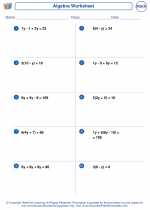Solving linear equations -> quotient rule
Quotient Rule
The quotient rule is a formula used to find the derivative of a function that is the quotient of two other functions. It is particularly useful when dealing with functions that cannot be easily simplified before taking the derivative.
Formula
The quotient rule states that if you have a function f(x) = u(x)/v(x), where u(x) and v(x) are differentiable functions, then the derivative is given by:
f'(x) = (v(x) * u'(x) - u(x) * v'(x)) / (v(x))^2
Example
Let's say we have the function f(x) = (3x^2 + 2x + 1) / (2x + 1). To find its derivative, we can use the quotient rule:
f'(x) = ((2x + 1) * (6x + 2) - (3x^2 + 2x + 1) * 2) / (2x + 1)^2
Steps to Apply the Quotient Rule
- Differentiate the numerator function u(x) to get u'(x).
- Differentiate the denominator function v(x) to get v'(x).
- Apply the quotient rule formula: f'(x) = (v(x) * u'(x) - u(x) * v'(x)) / (v(x))^2.
Study Guide
When using the quotient rule, it's important to carefully differentiate the numerator and denominator functions and then apply the formula correctly. Here are some key points to remember:
- Always start by identifying the numerator and denominator functions.
- Be cautious when differentiating each function, especially when dealing with more complex expressions.
- Keep track of the order of operations when applying the quotient rule formula.
- Check your final answer and simplify if possible.
Practice using the quotient rule with different functions to become comfortable with its application and to improve your differentiation skills.
Remember, the quotient rule is a valuable tool for finding the derivative of quotient functions, and mastering it will help you in solving a wide range of calculus problems.
[Quotient Rule] Related Worksheets and Study Guides:
.◂Math Worksheets and Study Guides Eighth Grade. Solving linear equations
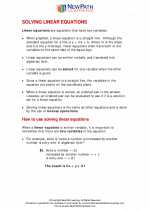
 Worksheet/Answer key
Worksheet/Answer key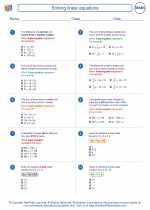
 Worksheet/Answer key
Worksheet/Answer key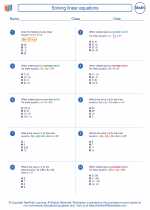
 Worksheet/Answer key
Worksheet/Answer key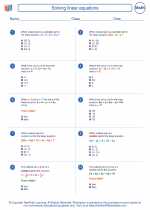
 Worksheet/Answer key
Worksheet/Answer key
 Worksheet/Answer key
Worksheet/Answer key